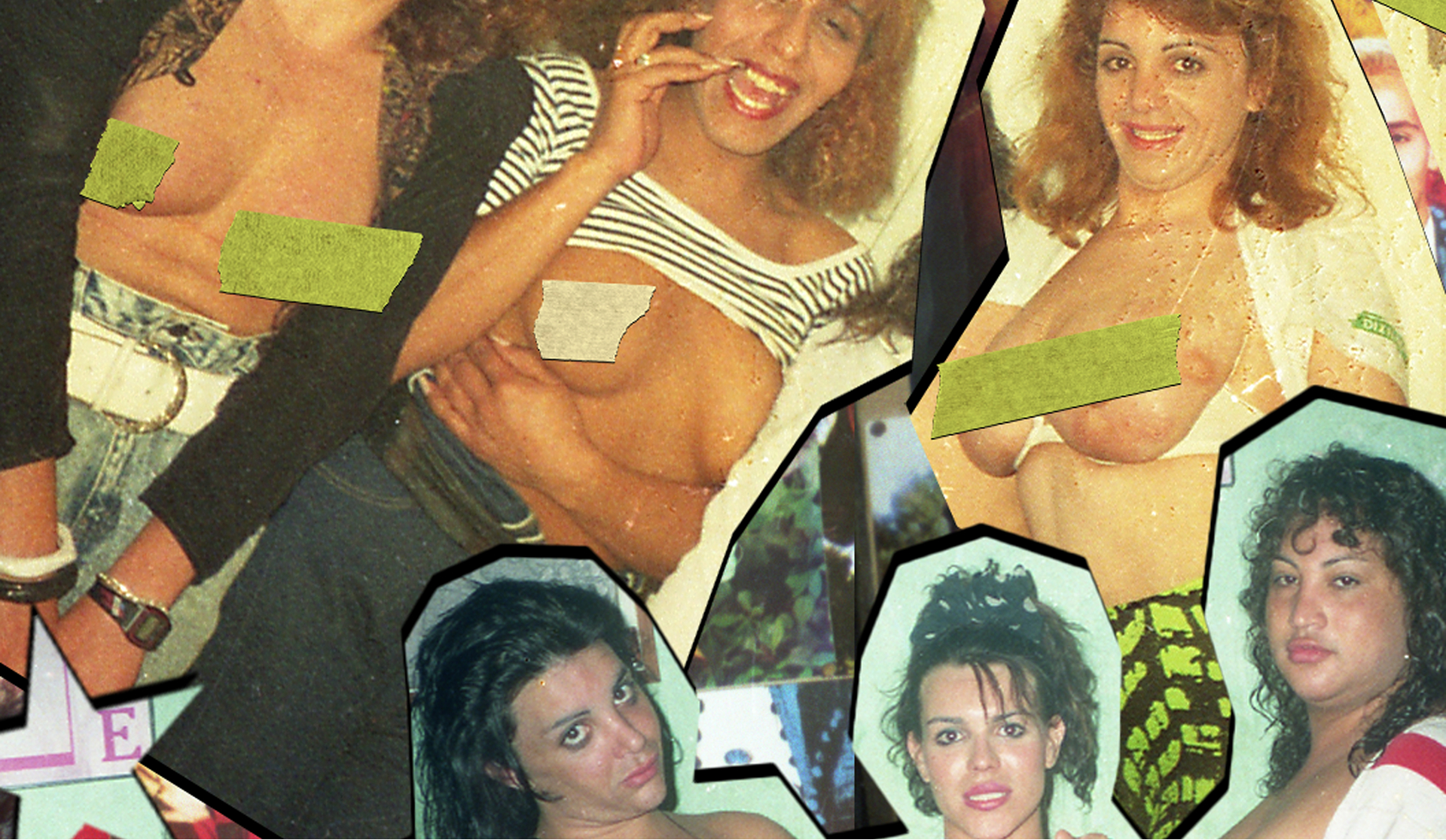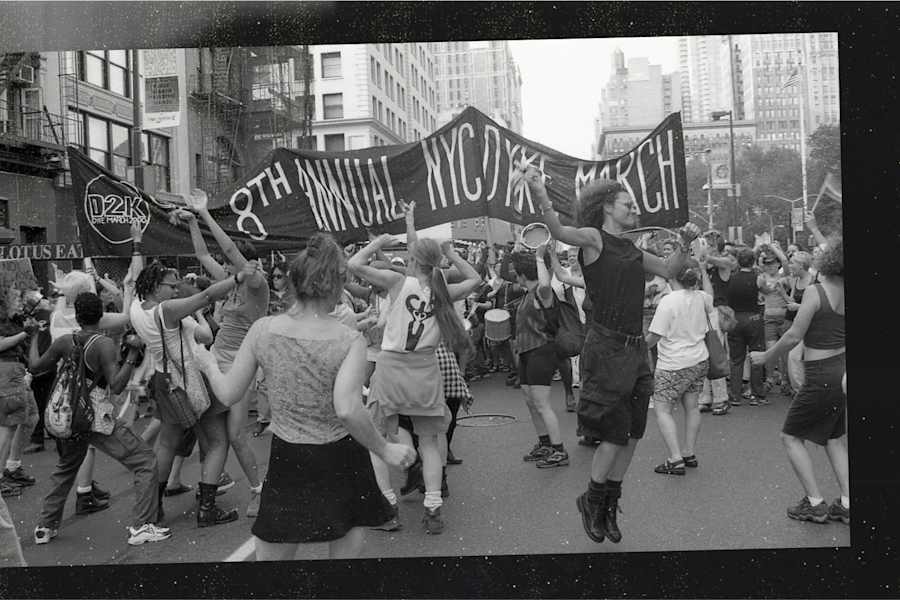The Argentinian people are heartbroken and rattled by the death of Silvina Luna [1]—a consequence of illegal cosmetic surgery performed by Dr. Aníbal Lotocki [2]—and some, it seems, are even surprised. They are those who tend to forget, or ignore, the fact that almost an entire generation of transgender people had their lives cut short by such procedures, on top of those of us who were killed in hate crimes, and those of us who have survived them are left to face the fallout: the poison that they left behind.
I remember my first injection, in 1991, and the social dictate that led me to get it: “If you don’t have silicone, you’re not a real travesti.” I was seventeen years old. It was in my own home, and the girl who gave it to me was one of my best friends. I say “silicone” and not “silicona” (or “engine oil,” as the sensationalist media so lovingly put it), because that’s what we said when we asked for it at the drugstore.
The origins of this procedure can be traced back to the girls who went into exile, fleeing to Brazil, during our military dictatorship [3]. When they returned to Argentina in the ’80s, they came carrying foreign words that we folded into our Carrilche [4] language—our secret slang. But they also came bearing cylinders of silicone, stashed beneath their sleeves.
Industrial silicone could be found at the hardware store, in 5liter drums, while “medical-grade” versions were at the pharmacy, in clear half-liter glass bottles, on the pharmacy shelf. The difference deceived us; we thought that buying it at the pharmacy meant it was better. The only distinction may have been that it was purer, fit for lubricating a finer kind of machinery, some kind of surgical tool instead of a motorcycle, and still not for shooting into somebody’s body.
However it happened, that mystical elixir became our ticket to fitting in. After only fifteen days of bedrest, I could have the body of my dreams, something that, until then, only a lucky few had ever achieved, and only with hormones, which took a long time. We knew that the silicone could kill us the very moment we injected ourselves with it, and that if we survived the ordeal, we must endure and remain vigilant through that critical period, 28 hours during which it might be revealed to us that we had inadvertently punctured our organs or veins. In spite of all this, we did it. There was no one there to warn us of what we would witness in the mid-’90s: the agonizing lesions, and the premature death, of many of those who had received silicone injections as little as a decade before.
That’s when my journey—or better yet my crucible—began to innumerable countries and doctor’s offices, in order to rid myself of as much of this substance as possible. And there's a cruel irony in that: my initial procedures, always clandestinely performed at home by one of our own, ultimately led me to the operating room; to the very place, having little recourse to medicine, I once sought to avoid.
In 1996, I underwent my first silicone removal, from my hips, with a doctor in La Plata. In ’98, with the same doctor, from my buttocks. Later, I had some removed from my chest to make way for implants, though some silicone, which had migrated to my underarms, still remained. In 2008, a brief interlude from my exile led me back to Argentina, and a doctor in Santa Fe removed a significant amount of silicone from my hips and my buttocks again. In 2009, I had a procedure in Madrid that was less than successful. Since there’s always some left to remove, I had my implants replaced and more of the substance taken out in Mexico in 2011, and then there was another such procedure, in Colombia, in 2012. My most recent surgery was in 2018 in Greece, where the goal was to remove as much as possible from under my armpits and to reconstruct my chest.
Still, to this day, I find myself in consultations with various doctors, tirelessly exploring new techniques, invariably within the confines of a private practice, without so much as a hint of assistance from the state. Their indifference to our predicament is palpable. To them, we are merely travestis, after all.
A few weeks ago, I returned to Argentina for the launch of Nuestros Códigos, a new collection of photographs and testimonials produced by El Archivo de la Memoria Trans, which I had co-edited with Liliana Viola. It was held at the National Congress, at the invitation of federal congresswoman Mara Brauer. The event was attended by transgender women over fifteen from disparate regions of the country, many of whom happened to be in Buenos Aires by coincidence, having arrived to attend a national conference on HIV/AIDS. When it came to my turn to speak, facing my fellow trans sister, I found myself deviating, ineluctably, from my previously prepared remarks. With the passing of Silvina Luna, the perils of cosmetic silicone injections were catapulted from the low realm of an isolated, personal burden to become the cause of a national tragedy. This poisoning—the time bomb that trans women of our generation carry within our bodies—has long been a collective one, and ours alone.
I implore the Argentine state [5] and its public health system to finally recognize this affliction, prevalent among trans- and cisgender populations alike, and to provide necessary training to public health professionals. We demand the right to access treatment with qualified professionals in the state-funded public hospital system nationwide, a standard that has been met in the private sector for some time.
I harbor no resentment towards my sister who administered silicone injections to my entire body, for at that time, our shared marginalization made even basic medical care inaccessible, and she was instrumental in forging my identity with the limited means we had. Today, we who have survived with silicone injections for decades implore transgender people of younger generations, to avoid dangerous ways of working around an unjust system, but to demand their right to dignified medical care.
Translated by Karim Kazemi.
[1]An Argentine actress, model, and TV presenter who died on August 31, 2023, at the age of 43. In 2011, Luna underwent an atypical Brazilian butt lift procedure in which she was injected with a liquid containing polymethylmethacrylate (PMMA), a banned plastic substance that caused her to develop hypercalcemia and renal insufficiency.
[2] Lotocki now faces multiple criminal charges, including medical malpractice and manslaughter.
[3] The era of Argentina’s military dictatorship, spanning from 1976 to 1983, was characterized by a program of state terrorism known as the “Dirty War” whose extensive human rights violations included illegal detentions, rape, extrajudicial killings, and the forced disappearance of an estimated 30,000 activists, dissidents, students, journalists, and LGBTQ Argentinians.
[4] A robust argot created by transgender women and gay men in Argentina, Carrilche sometimes served to alert others to danger, including police raids, without raising suspicion. Heavily influenced by prison jargon, it reflects the prolonged detention experienced by many gay and transgender people during the period of the military junta.
[5] In the time between this essay's original publication and its translation, the election of self-described “anarcho-capitalist” Javier Milei to the office of president has raised fears of a widespread rollback of the social and democratic achievements of the past 40 years, such as the legalization of gay marriage and abortion, imposing taxes on extreme wealth, and prosecuting the military dictatorship’s crimes. In a widely circulated video, Milei made a dramatic display of his intentions to shutter numerous government ministries, including the Ministry of Women, Gender, and Diversity.



